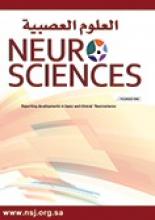Abstract
OBJECTIVE: To compare the orthodox use of 5 days crystalline penicillin and an alternate regime of single intramuscular injection of long acting oily chloramphenicol during the 1999 cerebrospinal meningitis epidemic that occurred in Abu Jubeha, South Kordofan, Sudan.
METHODS: All 793 patients with meningococcal meningitis admitted to Abu Jubeha hospital in the eastern parts of South Kordofan State, were investigated. Through a quasi-experimental design some 140 patients were treated with crystalline penicillin for 5 days while the remaining majority, after the exhaustion of penicillin stocks, were put on single-dose intramascular injections of oily long-acting chloramphenicol.
RESULTS: Males were slightly more affected than females (1.3:1), mean age affected was 17.2 years, the majority being below 20 years of age (68%) while 27.3% were below 10 years. The peak of the epidemic was during late March and early April namely 9th and 10th epidemic weeks. In the penicillin group 87.1% recovered uneventfully, 6.4% died, 2.1% developed blindness and 1.5% partial deafness. In the chloramphenicol group, full recovery was reported in 92.8%, 5% fatalities, blindness in 0.5%, partial deafness in 0.3% and skin necrosis in 0.1%.
CONCLUSION: The study suggests the use of single-dose intramascular injections of oily chloramphenicol as a nationwide antibiotic of choice for future meningitis epidemics in view of not only its efficacy, but also its low cost, easiness of use, stability and safety.
- Copyright: © Neurosciences
Neurosciences is an Open Access journal and articles published are distributed under the terms of the Creative Commons Attribution-NonCommercial License (CC BY-NC). Readers may copy, distribute, and display the work for non-commercial purposes with the proper citation of the original work.






